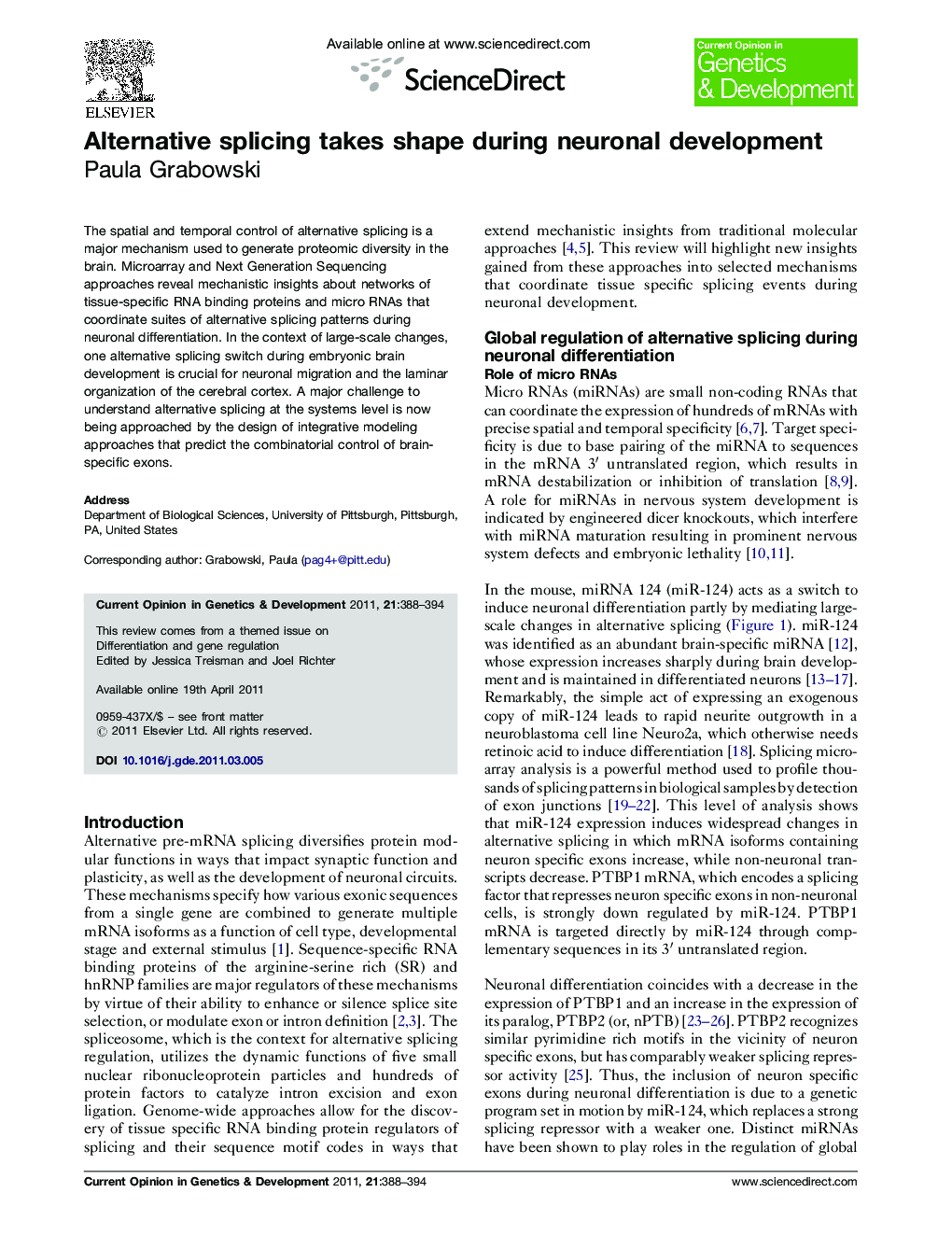| Article ID | Journal | Published Year | Pages | File Type |
|---|---|---|---|---|
| 2784970 | Current Opinion in Genetics & Development | 2011 | 7 Pages |
The spatial and temporal control of alternative splicing is a major mechanism used to generate proteomic diversity in the brain. Microarray and Next Generation Sequencing approaches reveal mechanistic insights about networks of tissue-specific RNA binding proteins and micro RNAs that coordinate suites of alternative splicing patterns during neuronal differentiation. In the context of large-scale changes, one alternative splicing switch during embryonic brain development is crucial for neuronal migration and the laminar organization of the cerebral cortex. A major challenge to understand alternative splicing at the systems level is now being approached by the design of integrative modeling approaches that predict the combinatorial control of brain-specific exons.
► Splicing factor – micro RNA networks coordinate the process of neuronal differentiation. ► Computational modeling with Bayesian networks predicts the combinatorial control of splicing. ► Nova2 induces exon skipping in the Disabled-1 transcript to orchestrate neuronal migration.
